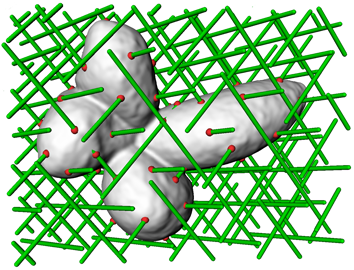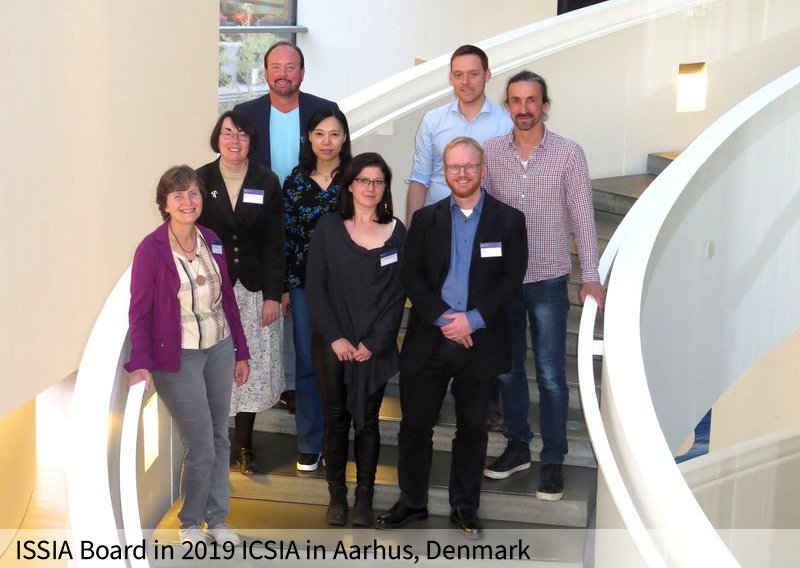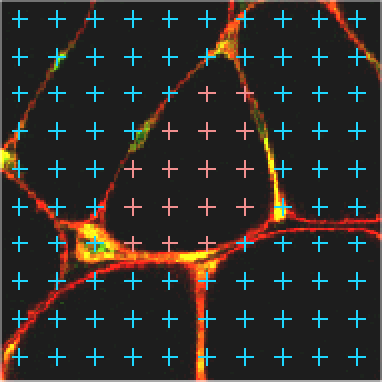International Society for
Stereology & Image Analysis
About ISSIA

International Society for Stereology & Image Analysis (ISSIA) is an international scientific society aiming to promote stereology and image analysis in a wide range of disciplines. ISSIA continues from the well established International Society for Stereology with expanded scope to all aspects of image analysis.
Our members are coming from many different fields of science such as mathematics, biomedicine, computer science, material science, statistics, geology, stochastic geometry, etc.
Participating to one of our international congresses on Stereology and Image Analysis is probably the best way to experience ISSIA. But, joining us for a short course or publishing in our journal Image Analysis & Stereology is another way of becoming actively involved.
Contact email address: info@issia.net
Logotype
Board

President
- Dorothy E. Oorschot (stereology in biomedicine and neuroscience; University of Otago, Dunedin, New Zealand)
Secretary
- Bruno Figliuzzi (image processing, stochastic geometry and materials science; Mines ParisTech, France)
Treasurer
- Aleš Kladnik (image analysis and microscopy in plant biology; University of Ljubljana, Slovenia)
Immediate Past President
- Eric Pirard (particle shape analysis in geosciences; University of Liège, Belgium)
Members of the Board
- Zhiqiang Chen (stereology, computed tomography; Tsinghua University, China)
- Augusto Coppi (stereology in biomedicine; School of Anatomy, University of Bristol, UK)
- Karl-Anton Dorph-Petersen (stereology in biosciences; Aarhus University, Denmark)
- Aneta Gądek-Moszczak (image analysis and stereology in materials science and medicine; Cracow University of Technology, Poland)
- Zbyněk Pawlas (stochastic geometry and spatial statistics; Charles University, Czech Republic)
- Daniel A. Peterson (image analysis, stereology and microscopy in biomedicine; The Chicago Medical School, USA)
- M.M. Ramya (image processing, mathematical morphology and machine vision; Hindustan Institute of Technology and Science, India)
- Dvoralai Wulfsohn (agricultural engineering, Geco Enterprises, Chile)

Honorary members
- Lucie Kubínová
- Eva B. Vedel Jensen
- Luis Cruz-Orive
- Dominique Jeulin
- Ida Eržen
- Terry M. Mayhew
- Dietrich Stoyan
- Hans Jørgen G. Gundersen
- Robert DeHoff
- Hans Elias
- R. Buckminster Fuller
- Otto Röhm
- S.A. Saltykov
- August Hennig
- Harold W. Chalkley
- Luís Antoni Santaló Sors
- Ivan Saxl
Past ISS presidents
- Hans Elias (1961-April 11 1967)
- Ewald R. Weibel (April 11 1967-1971)
- Ervin E. Underwood (1972-1975)
- Herbert Haug (1976-1979)
- H.E. Exner (1980-83)
- Roger Miles (1984-1987)
- Jean-Louis Chermant (1988-1991)
- Vyvyan C. Howard (1992-1995)
- Bente Pakkenberg (1996-1999)
- John Bertram (2000-2003)
- Dominique Jeulin (2004-2007)
- Jens R. Nyengaard (2008-2011)
- Eric Pirard (2012-2015)
- Lucie Kubínová (2016-2020)
- Aleš Kladnik (2021-2025)
Society details
Registered name: International Society for Stereology & Image Analysis, z. s.,
Legal Address: Jetelová 3255/9a, Záběhlice, 106 00 Praha 10, Czech republic
VAT ID number: CZ05258910
Registration no.: L66316
Bank details
ACCOUNT EUR
- Name of bank: Fio banka a.s.
- Adress of the bank: v Celnici 1028/10, 117 21 Prague 1, CZ
- IBAN: CZ5320 1000 0000 2701 0590 98
- Account number: 2701059098/2010
- SWIFT/BIC code: FIOBCZPPXXX
ACCOUNT CZK
- Name of bank: Fio banka a.s.
- Adress of the bank: v Celnici 1028/10, 117 21 Prague 1, CZ
- IBAN: CZ6320 1000 0000 2001 0590 97
- Account number: 2001059097/2010
- SWIFT/BIC code: FIOBCZPPXXX
Contact
E-mail address: info@issia.net
Dorothy Oorschot - President
University of Otago
Department of Anatomy
PO Box 913
9054 Dunedin
New Zealand
e-mail: dorothy.oorschot@otago.ac.nz
Bruno Figliuzzi - Secretary
MINES ParisTech
Centre de Morphologie Mathématique
60 Bd St. Michel
75272 Paris Cedex 06
France
e-mail: bruno.figliuzzi@cmm.ensmp.fr
Aleš Kladnik - Treasurer
University of Ljubljana
Biotechnical Faculty, Department of Biology
Večna pot 111
SI-1000 Ljubljana
Slovenia
e-mail: ales.kladnik@bf.uni-lj.si
Stereology

Is this the first time you stumble on the word stereology?
From its greek roots "stereo"and"logos" the term means the "science of studying solids".
In practice, it was originally defined in modern science as "the spatial interpretation of sections". It is an interdisciplinary field that is largely concerned with the three-dimensional interpretation of planar sections of materials or tissues. It provides practical techniques for extracting quantitative information about a three-dimensional material from measurements made on two-dimensional planar sections of the material.
Stereology is a method that utilizes random, systematic sampling to provide unbiased and quantitative data. It is an important and efficient tool in many applications of microscopy (such as petrography, materials science, and biosciences including histology, bone and neuroanatomy). Stereology is a developing science with many important innovations being developed mainly in Europe. New innovations such as the proportionator continue to make important improvements in the efficiency of stereological procedures.
In addition to two-dimensional plane sections, stereology also applies to three-dimensional slabs (e.g. 3D microscope images), one-dimensional probes (e.g. needle biopsy), projected images, and other kinds of 'sampling'. It is especially useful when the sample has a lower spatial dimension than the original material. Hence, stereology is often defined as the science of estimating higher dimensional information from lower dimensional samples.
Stereology is based on fundamental principles of geometry (e.g. Cavalieri's principle) and statistics (mainly survey sampling inference). It is a completely different approach from computed tomography.
(c) Adrian Baddeley
Unbiased Stereology (book for download)

Three Dimensional Measurement in Microscopy
C.V. Howard & M.G. Reed
This book is a simple and practical guide to making unbiased 3-D measurements of microstructure via the microscope. It is not full of complex mathematics and is of use to biologists, toxicologists, pathologists, geologists and materials scientists. The techniques presented, which are statistical in nature, are tried and tested, and presented in a clear didactic style. Exercises, together with detailed worked answers are provided. The second edition, published in 2005, had three new chapters covering single object stereology, 'Petrimetrics’, or the application of survey sampling techniques to in vitro experiments, and second order stereology for local measures of spatial organisation. Unbiased stereology has been requested for nerve cell counts in neurotoxicology by the United States Food & Drug Administration, and is now being required by many journals as a condition of acceptance for research articles. This book has been continuously in print since 1998 and has more than 2,000 citations.
The book Unbiased Stereology can be downloaded from:
https://sites.google.com/view/unbiased-stereology
